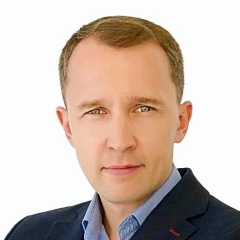Нужно сказать, что широкое празднование Дня Победы началось не сразу. ДО 1965 г. это был рабочий день. К тому же многие источники говорят о конце сороковых, как о периоде очень тяжелом для людей, периоде переживания потерь, депрессии, которая затмевала часто радость победы. И на праздновании это тоже сказывалось. Как это происходило в нашей семье: люди собирались даже не семьей, а двором, вместе с соседями, вспоминали и... плакали. И больше фактически ничего. На салют моя мама еще бегала. Потом их иногда на предприятия водили детским садом, на утренниках выступали. И отношение к фронтовикам, к вдовам и детям погибших было совсем другим. Никаких подарков от военкомата, никаких наборов. Только вдовья пенсия за погибшего деда (да и ту делили на три семьи).
Переломный год - 65й. Змечу, это был не только год юбилея. Это еще был первый год Брежнева.
так что введение выходного, парад - это еще первый крупный шаг власти. И ход этот не случаен. Все-таки Леонид Ильич хоть и политрук, но пороху нюхнул.
Техника едет по Энгельса на тот самый первый парад 1965г.
С 1965 г. насколько я понимаю парады были не каждый год, только по юбилейным датам кратным пяти.
Уже в 70-е (точной даты не знаю) появляется традиция прохода по Невскому к пл. Восстания ветеранов.
Это 75й
а это 83й годы
И не случайно на этом месте в 85г. появляется чрезвычайно неудачный памятник.
Празднование Дня Победы 9 мая, Ленинград, 1973.
Фото праздничного митинга в артмузее из частной коллекции, начало 80-х
Особо хочется сказать о блокадниках. Их положение - как бы "ветеранов второго сорта" изменилось только в начале 90-х. До этого никаких особых льгот, никаких преференций, никакой особой поддержки не было.
В начале 90-х прекратилась практика военных парадов. Это было явно влияние запада, где традиция воинских парадов ушла. Но в 95 году парады начались снова. Именно 95 год стал переломным. Тогда праздник постепенно стал преварщаться в помпезный формальный праздник. Сейчас День Победы больше напоминает празднование 7 ноября или 1 мая в позднее советское время.
И особо хочется отметить вклад не властей, а деятелей шоу-бизнеса, официальной поп-культуры и обезьян с фотошопом (язык не поворачивается назвать их дизайнерами), лепящим на плакаты над георгиевской ленточкой Тигры и Штуки.
Переломный год - 65й. Змечу, это был не только год юбилея. Это еще был первый год Брежнева.
так что введение выходного, парад - это еще первый крупный шаг власти. И ход этот не случаен. Все-таки Леонид Ильич хоть и политрук, но пороху нюхнул.
Техника едет по Энгельса на тот самый первый парад 1965г.
С 1965 г. насколько я понимаю парады были не каждый год, только по юбилейным датам кратным пяти.
Уже в 70-е (точной даты не знаю) появляется традиция прохода по Невскому к пл. Восстания ветеранов.
Это 75й
а это 83й годы
И не случайно на этом месте в 85г. появляется чрезвычайно неудачный памятник.
Празднование Дня Победы 9 мая, Ленинград, 1973.
Фото праздничного митинга в артмузее из частной коллекции, начало 80-х
Особо хочется сказать о блокадниках. Их положение - как бы "ветеранов второго сорта" изменилось только в начале 90-х. До этого никаких особых льгот, никаких преференций, никакой особой поддержки не было.
В начале 90-х прекратилась практика военных парадов. Это было явно влияние запада, где традиция воинских парадов ушла. Но в 95 году парады начались снова. Именно 95 год стал переломным. Тогда праздник постепенно стал преварщаться в помпезный формальный праздник. Сейчас День Победы больше напоминает празднование 7 ноября или 1 мая в позднее советское время.
И особо хочется отметить вклад не властей, а деятелей шоу-бизнеса, официальной поп-культуры и обезьян с фотошопом (язык не поворачивается назвать их дизайнерами), лепящим на плакаты над георгиевской ленточкой Тигры и Штуки.
It must be said that the widespread celebration of Victory Day did not begin immediately. Until 1965 it was a working day. In addition, many sources speak of the late forties as a very difficult period for people, a period of experiencing losses, depression, which often overshadowed the joy of victory. And this also affected the celebration. How it happened in our family: people gathered not even as a family, but in the yard, together with neighbors, remembered and ... cried. And virtually nothing else. My mother still ran to the fireworks. Then they were sometimes taken to enterprises by kindergarten, performed at matinees. And the attitude towards the front-line soldiers, towards the widows and children of the victims was completely different. No gifts from the military registration and enlistment office, no kits. Only a widow's pension for a deceased grandfather (and even that was divided into three families).
The turning point is the 65th. Note that this was not only the anniversary year. This was still the first year of Brezhnev.
so the introduction of the day off, the parade is still the first major step of the government. And this move is not accidental. Still, Leonid Ilyich, although a political instructor, sniffed the gunpowder.
The technique travels along Engels to the very first parade of 1965.
Since 1965, as far as I understand, parades were not every year, only on anniversary dates in multiples of five.
Already in the 70s (I don’t know the exact date) there was a tradition of passage along the Nevsky to the square. Veterans' uprisings.
This is the 75th
and this is 83rd years
And it is no coincidence that in this place in 85g. an extremely unfortunate monument appears.
Celebrating Victory Day on May 9, Leningrad, 1973.
Photo of a festive meeting in the art museum from a private collection, early 80s
I would especially like to say about the blockade. Their position - as it were, "second-class veterans" changed only in the early 90s. Before that, there was no special benefits, no preferences, no special support.
In the early 90s, the practice of military parades ceased. It was clearly influenced by the West, where the tradition of military parades was gone. But in 95, the parades began again. It was 95 that became a turning point. Then the holiday gradually began to turn into a pompous formal holiday. Now Victory Day is more like a celebration on November 7 or May 1 in late Soviet times.
And I would especially like to note the contribution not of the authorities, but of show business figures, official pop culture and monkeys with photoshop (I can't dare call them designers), sculpting Tigers and Stuka on posters over the St. George ribbon.
The turning point is the 65th. Note that this was not only the anniversary year. This was still the first year of Brezhnev.
so the introduction of the day off, the parade is still the first major step of the government. And this move is not accidental. Still, Leonid Ilyich, although a political instructor, sniffed the gunpowder.
The technique travels along Engels to the very first parade of 1965.
Since 1965, as far as I understand, parades were not every year, only on anniversary dates in multiples of five.
Already in the 70s (I don’t know the exact date) there was a tradition of passage along the Nevsky to the square. Veterans' uprisings.
This is the 75th
and this is 83rd years
And it is no coincidence that in this place in 85g. an extremely unfortunate monument appears.
Celebrating Victory Day on May 9, Leningrad, 1973.
Photo of a festive meeting in the art museum from a private collection, early 80s
I would especially like to say about the blockade. Their position - as it were, "second-class veterans" changed only in the early 90s. Before that, there was no special benefits, no preferences, no special support.
In the early 90s, the practice of military parades ceased. It was clearly influenced by the West, where the tradition of military parades was gone. But in 95, the parades began again. It was 95 that became a turning point. Then the holiday gradually began to turn into a pompous formal holiday. Now Victory Day is more like a celebration on November 7 or May 1 in late Soviet times.
And I would especially like to note the contribution not of the authorities, but of show business figures, official pop culture and monkeys with photoshop (I can't dare call them designers), sculpting Tigers and Stuka on posters over the St. George ribbon.
У записи 3 лайков,
0 репостов.
0 репостов.
Эту запись оставил(а) на своей стене Сева Пежемский
























